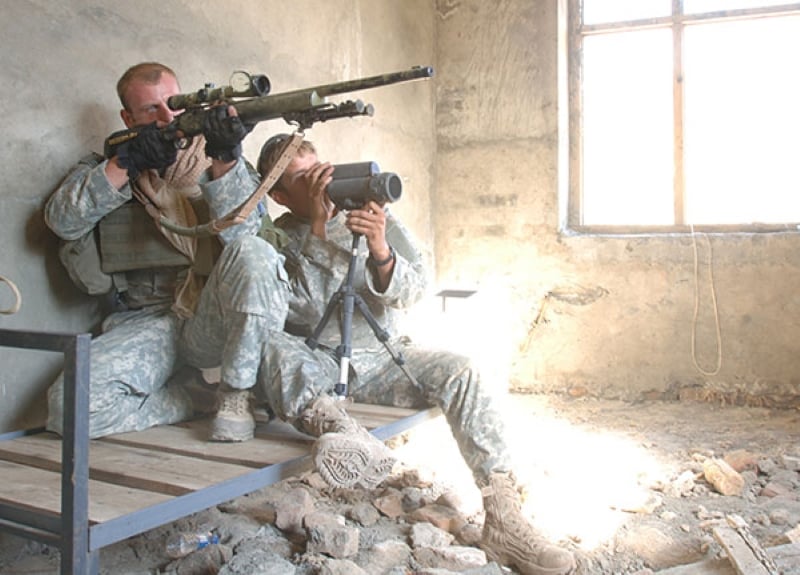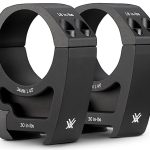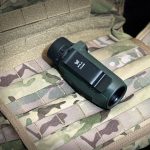Remington Model 700: A Do-All Bolt Gun

The Remington 700 has become a virtual legend in the firearms community. You’d best make some popcorn and pull up a chair as we prepare to delve into this legend’s history. Some 700s are fancy. Some are upgraded for law enforcement or military snipers. Others are plain, economy models for frugally-minded folks. But there’s a flavor for everyone.
Way Back When
The Remington 700 came to the market way back in 1962, but its origins date further back to just after World War I. It was a war of bolt action rifles, and our boys returning from the “War To End All Wars” were so familiar with the bolt action concept, and it was so loved, that manufacturers went with it and began producing them in huge numbers. It wasn’t just the popularity, though; manufacturers, who were geared up for war, had tons of components (literally) in their factories, and they didn’t intend to waste the materials and components. Those components, originally intended for military weapons, were converted into civilian rifles.
Remington was quick to deliver the Model 30, made from leftover Enfield parts and chambered in the very familiar (and plentiful) .30-06. In 1926, the Model 30 Express, which was lighter, replaced it. The 30 Express was available in many calibers and set the stage for bolt-action hunting rifles to come. After WWII, Remington introduced the Model 721 in 1948. The 721 and the following 722 in short action were popular with returning GIs for hunting and shooting. They were affordable rifles but were rather plain in appearance. This led to the Model 700 coming along in 1962.
The Model 700 kept the basic design of the 721 but featured improvements and came in a better-looking package. Over the years, the 700’s claim to fame has been its accuracy and the strength of its action, both of which are excellent.
Early Models
Initially, there were two models introduced: the ADL and the BDL. The ADL had no hinged floor plate (a blind magazine), whereas the BDL had a hinged floor plate, which facilitated unloading the magazine. There were both long and short actions, depending on the caliber the rifle was chambered for.
The initial price for the Model 700 ADL in standard calibers was $114.95 and $139.95 for the BDL. For Magnum calibers, the BDL sold for $154.95, and that included .264 Win. Mag., 7mm Rem. Mag., and .300 Win. Mag. For .375 H&H Magnum and .458 Win. Magnum, the prices were $310.00.
In 1969, Remington stepped up its game by offering jeweled bolts, improved stock finishes, and a longer bolt shroud as upgrades, and in 1973, left-handed versions were introduced.
Later on, the SPS (Special Purpose Synthetic) was introduced as a no-frills, utility-type rifle. The stock was all black, and the metal featured an all-black, matte finish. It was a working man’s rifle and exhibited excellent accuracy.
The Action
Remington subscribes to the “Three Rings Of Steel” approach. This is achieved with a recessed bolt face that fits into a recess in the barrel, and then the action (a third ring), creating three rings. In the event of a cartridge failure, these levels of protection keep the gases and particles from reaching the shooter, making the action very safe. Aside from the safety aspect, it also lends itself to accuracy; the recessed bolt face helps keep the cartridge aligned better. And that alignment contributes to accuracy.
Extractor
The 700’s extractor has long been criticized as being too “fragile.” People claim it’s no good and needs to be replaced with a more robust unit. To be honest, I’ve never seen one fail. Matter of fact, I’ve never even spoken with someone who has experienced one failing. And I’ve been around a lot of Remington 700s, as we used them on the sniper teams that I was involved in. If they were really that bad, chances are, we’d have seen issues with them, but we never did.
Aside from the issued rifles I’ve used and been around, I’ve owned a number of 700s over the years and have never experienced a problem with any of those, either. Consequently, I’m convinced that this is one of those urban legends that sweep through the shooting community.

Variations
Remington 700P
The Model 700P is a basic sniper rifle mainly intended for the law enforcement community. This is the rifle I was issued as a sniper on my state’s tactical unit, and I have several years of experience using this rifle.
It features an HS precision stock that has an aluminum bedding block so the action is solidly bedded. The stock has a palm swell in the pistol grip that gives a healthy purchase for the shooter’s hand. The bottom of the forend is flat for resting the rifle on sandbags or other surfaces, which adds stability from a rest.

Our 700P rifles came with the TWS (Tactical Weapons System), which included the rifle, a case, Harris bipod, and Leupold 3.5-10X tactical scope. The caliber was 7.62 NATO (.308 Winchester) with a 24-inch long barrel.
Aside from the 700P that I was issued, I also bought one for my personal use. These rifles proved to be extremely accurate, with my personal rifle easily shooting into 1/2-inch at 100 yards with match ammo. The rifles that my agency used were also very accurate, although slightly less so than my personal rifle. This was likely due to my rifle having a lower round count than the department’s rifles.
All in all, it is an outstanding weapons system that is durable and extremely accurate.
Remington 700 LTR
Remington introduced an offshoot of the 700P, the LTR (Light Tactical Rifle). It features a shorter barrel (20 inches) that is fluted. The stock is slimmer than the 700P’s, and lighter. I’ve handled the 700 LTR and it handles like a dream. The shorter barrel, which will lose a little velocity compared to the 700P, is far handier than its bigger brother. The lighter weight and shorter length offer immense advantages, especially when moving into an urban hide.
M40 Sniper Rifle
The M40 is used by the US Marine Corps, having been introduced originally in 1966. It has gone through several improvements over the decades, including the M40A1, M40A3, and M40A5. The A5 model was introduced in 2009. These rifles are based on the Model 700 and modified by USMC armorers in Quantico, Virginia.

The M40A5 features a threaded muzzle for the attachment of a sound suppressor as well as a detachable magazine. Original M40s as used in Vietnam had wooden stocks, but subsequent models featured fiberglass stocks.
The Marines are slated to replace the M40 series with a newer weapon in the coming years, the MK22, Mod O, which gives a couple of different caliber options. It’s made by Barrett Firearms and reportedly weighs 15.2 pounds (without scope or accessories).
M24 Sniper Weapons System
In 1988, the US Army adopted the M24 sniper rifle, which is similar to the Remington 700P. Chambered for 7.62 NATO, it used a Leupold M4 10x40mm scope. Some variants are also chambered in .338 Lapua Magnum, which is effective to appreciably longer distances than the standard 7.62 NATO round.

The stock is from HS Precision with adjustable cheek height and length of pull. As with most other rifles from the era, the M24 is being phased out in favor of more modern designs.
Parting Shots
It’s impossible to touch upon all the various configurations and models of the Remington 700 in one article. We tried to hit the high points and touch on some of the nitty gritty here in this article. With millions of Remington 700s in circulation, many readers are bound to be familiar with it. We hope you’ve enjoyed this perusal of the 700’s history, both civilian and military. There’s no doubt that it will be produced well into the foreseeable future and be around for many decades to come.
The post Remington Model 700: A Do-All Bolt Gun appeared first on The Mag Life.


